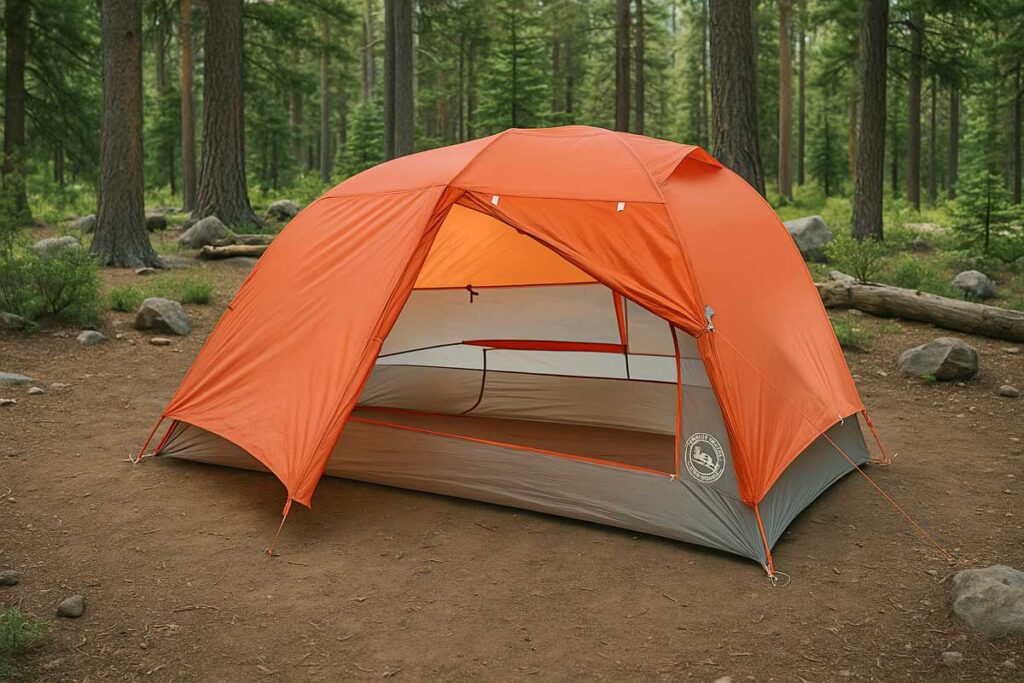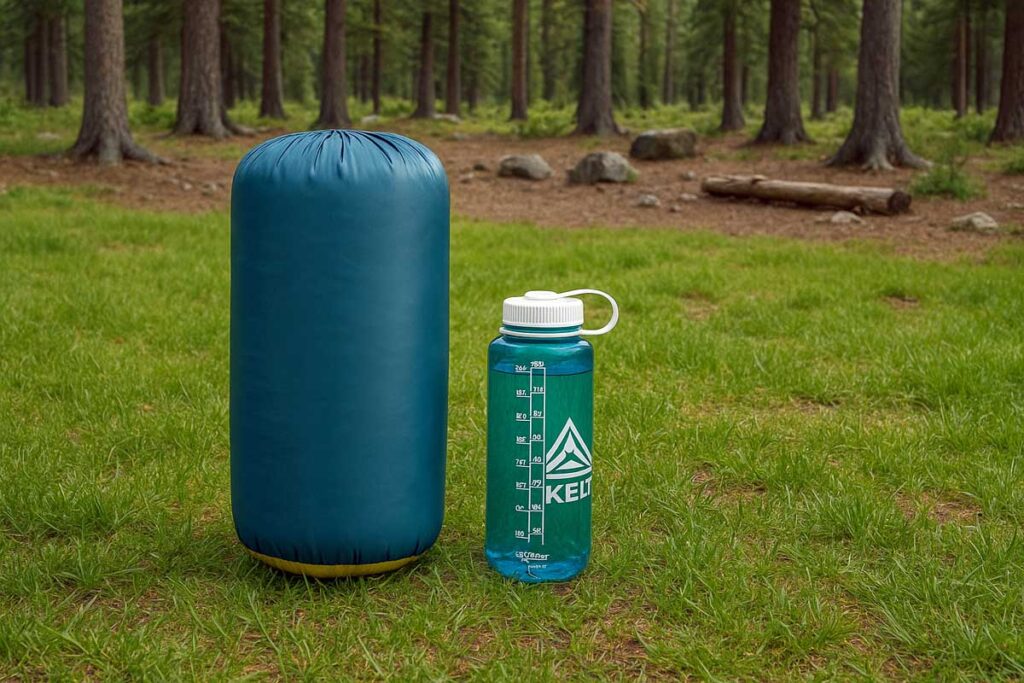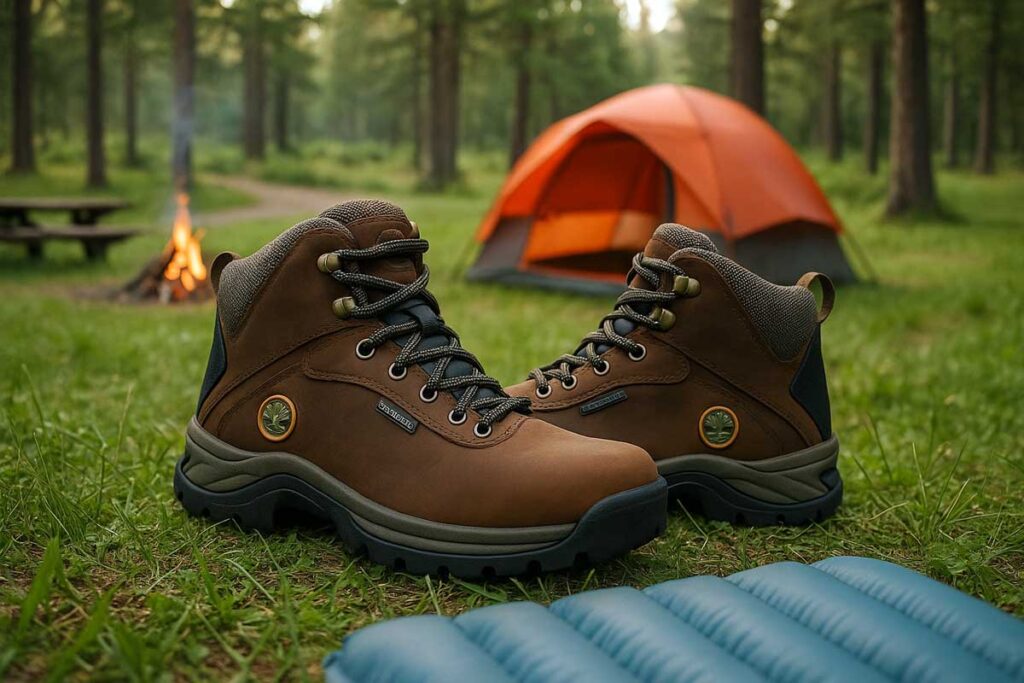What to Bring on a Weekend Camping Trip: 10 Must-Have Items
Find out what to bring on a weekend camping trip with our quick guide of 10 vital essentials.
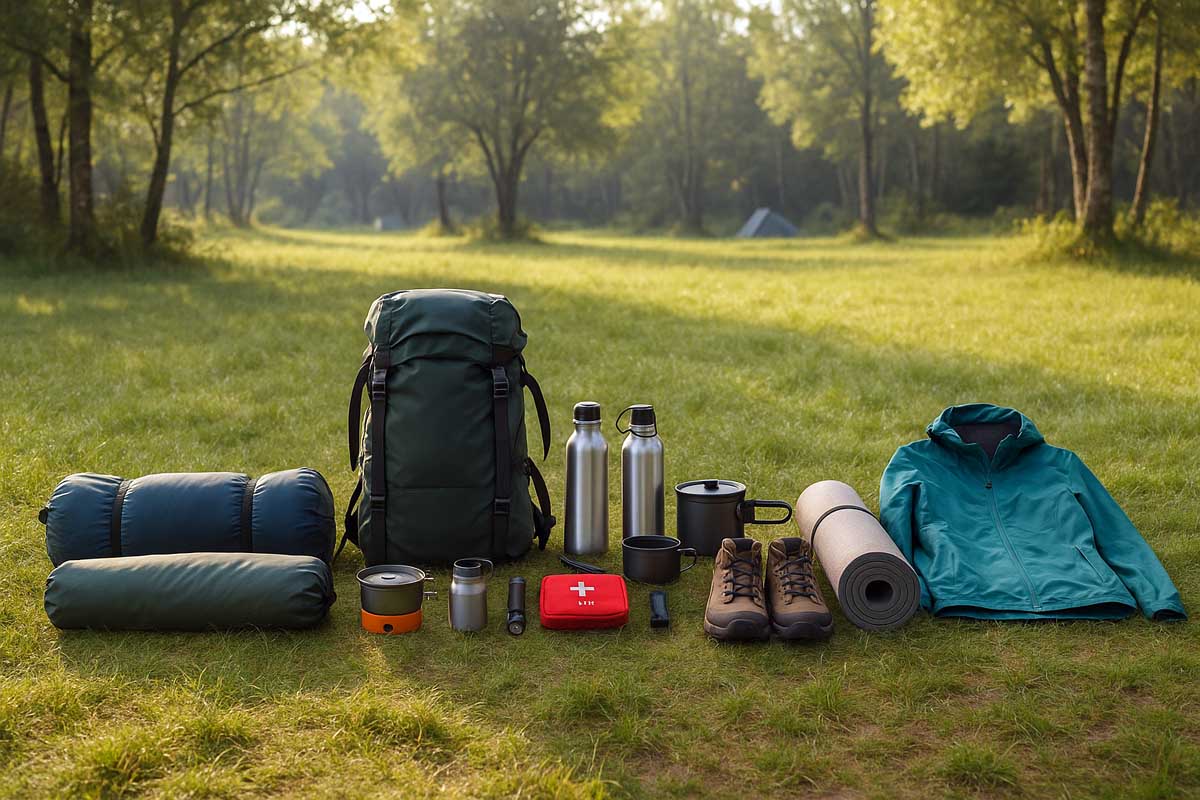
For a successful weekend camping trip, bring a reliable tent or shelter, a warm sleeping bag with a pad, versatile clothing layers, cooking gear (stove, utensils, food, and water), a first-aid kit, navigation and emergency supplies, and personal hygiene items. These essentials ensure safety, comfort, and convenience throughout your outdoor adventure.
I’ve spent many weekends in the wild, learning to make sure no critical gear is left behind. Let me share with you a breakdown of what you need to pack, why each item is important, and how to tailor your gear to match the conditions of your outdoor adventure.
Contents Include
- 1 1. Preparing for Your Trip
- 2 2. Shelter and Sleeping Gear
- 3 3. Clothing: Layer Up for Comfort
- 4 4. Cooking and Food Essentials
- 5 5. Navigation and Communication Tools
- 6 6. Safety and First-Aid Supplies
- 7 7. Personal Essentials and Extras
- 8 8. Packing and Organizing Your Gear
- 9 9. Final Tips and Reminders
- 10 10. Quick Reference Checklist
- 11 FAQs about What to Bring on a Weekend Camping Trip
- 12 Final Thoughts
1. Preparing for Your Trip
Planning and Research
Before you even pack your gear, spend some time planning your trip. Here’s how:
- Research the location: Look up weather, terrain, and any specific regulations. Knowing what to expect will help you choose the right gear.
- Establish your itinerary: Map out your activities and estimated travel times so that you can pack accordingly.
- Check restrictions: Some campsites have specific rules regarding open fires or the types of equipment allowed, so verifying this in advance is essential.
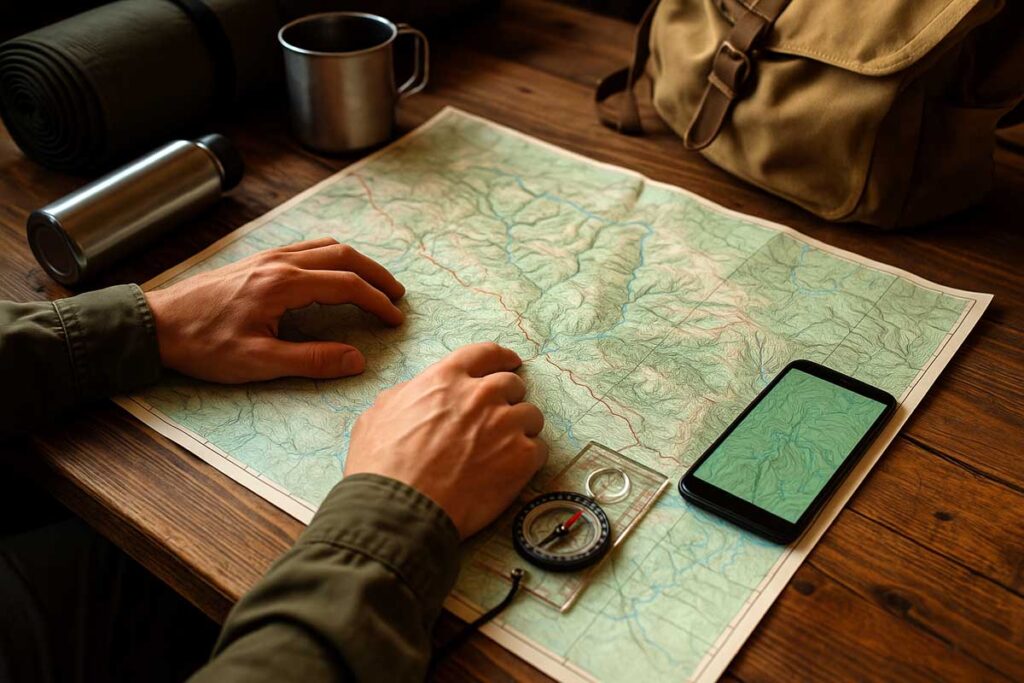
Creating Your Checklist
A detailed checklist ensures you don’t forget essential items. Customize your list based on the weather conditions, destination, and planned activities. I always review my list the day before departure to make sure nothing is left behind.
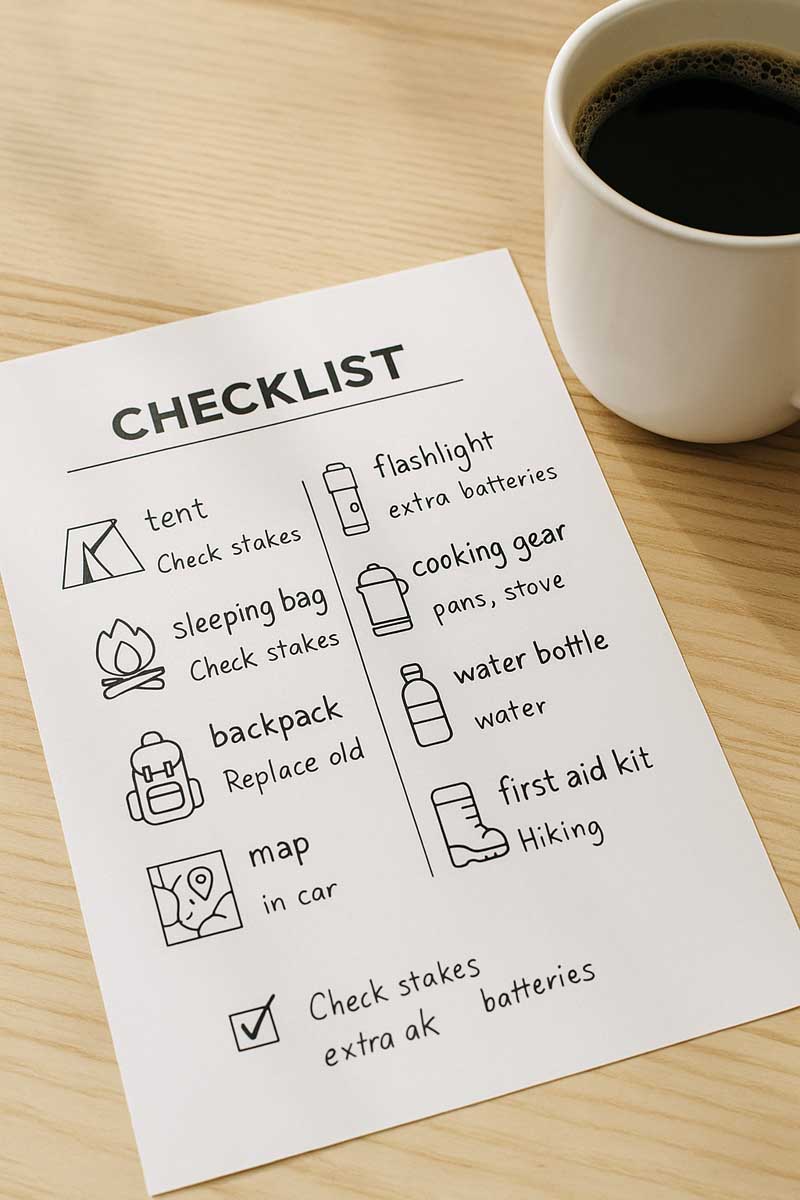
See also: What to Bring Camping
2. Shelter and Sleeping Gear
Tent and Shelter
Your shelter is the first thing you need to secure for a safe and comfortable night.
- Tent: A lightweight, weather-resistant tent is vital. Ensure it’s large enough for your group and any extra gear.
- Ground tarp or footprint: This extra layer of protection between your tent and the ground can prolong your tent’s life.
- Repair kit: Pack a small repair kit including duct tape and spare stakes.
Sleeping System
A good night’s sleep is non-negotiable when out in the wild.
- Sleeping bag: Choose one rated for the temperature you expect. For cooler nights, a mummy-style sleeping bag is a great option.
- Sleeping pad: This adds insulation and cushioning from the uneven ground.
- Pillow: A camping pillow or a makeshift option using clothes can enhance comfort.
| Item | Why It’s Essential | Tips |
|---|---|---|
| Tent | Provides shelter and protection | Ensure it has good ventilation |
| Sleeping bag | Keeps you warm during cooler nights | Choose one based on temperature ratings |
| Sleeping pad | Adds insulation and comfort | Consider inflatable or foam options |
| Ground tarp | Protects tent bottom from wear | Use it as an additional moisture barrier |
Know more: Best Camping Gear for Beginners
3. Clothing: Layer Up for Comfort
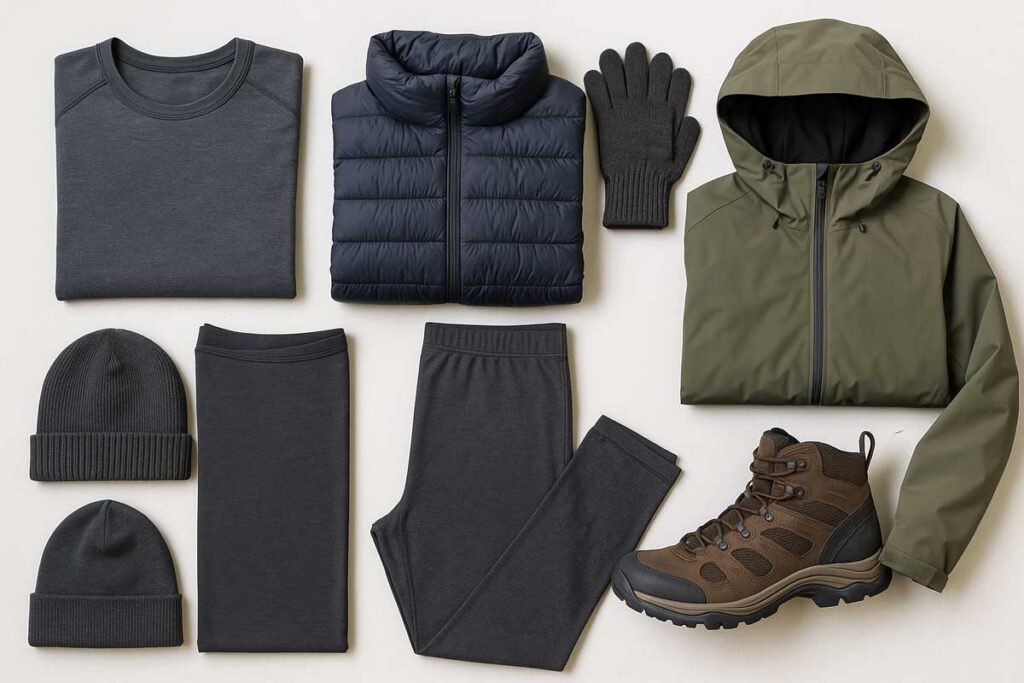
Choosing the right clothing is all about layering and adaptability. Here’s what you need:
- Base layers: Breathable, moisture-wicking fabrics help regulate body temperature.
- Insulating layers: Fleece or wool sweaters add warmth.
- Outer layers: A waterproof and wind-resistant jacket will protect you from the elements.
- Footwear: Durable hiking boots or shoes with good traction are crucial. Don’t forget extra socks and gloves.
- Accessories: Hats, scarves, and sunglasses enhance your overall comfort during your adventure.
Remember to pack both warm and cool weather options. Changing weather in the outdoors means you must be prepared for sudden shifts in temperature.
4. Cooking and Food Essentials
Cooking outdoors is one of the joys of a weekend camping trip. Here’s how to set up your outdoor kitchen:
- Portable stove or grill: Ensure you have an adequate fuel supply. Options range from propane stoves to charcoal grills.
- Cooking utensils: Bring a pot, pan, spatula, and a knife.
- Reusable plates and cutlery: Opt for durable and lightweight options.
- Food storage: Use a cooler or bear-proof container depending on your location.
- Non-perishable food: Think easy-to-cook meals like pasta, canned goods, and energy bars.
- Snacks: Always have quick snacks like nuts, dried fruits, or granola on hand.
- Water: Carry enough water for hydration and cooking. A portable water filter can be a lifesaver if you’re in an area with a safe water source.
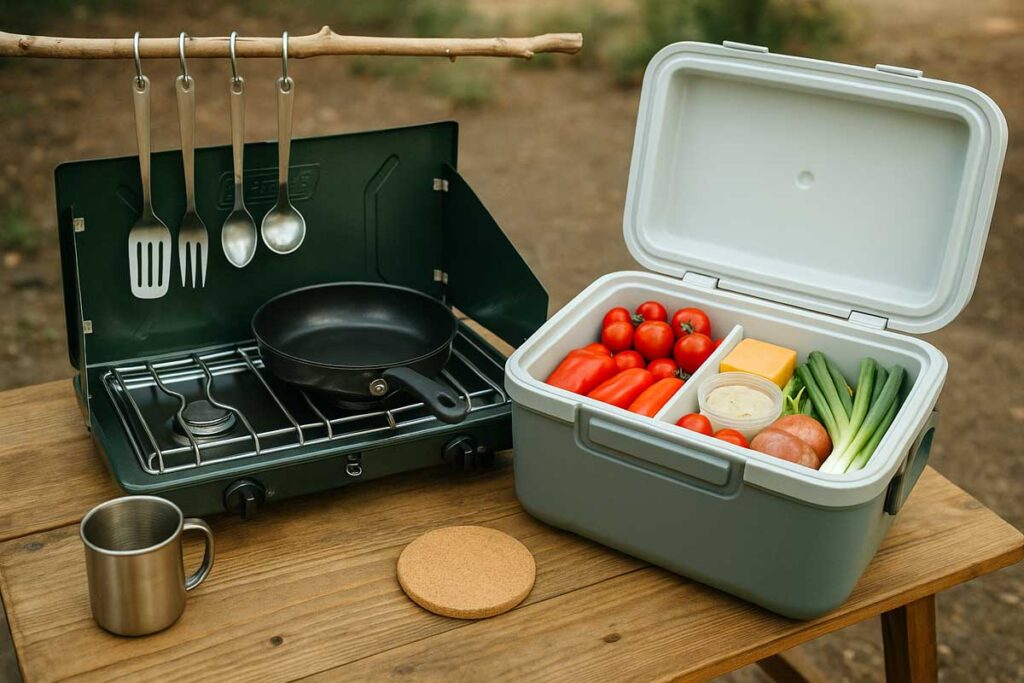
Pro Tip: Prepare your meals in advance as much as possible to reduce cooking time and manage your supplies efficiently. This allows you to spend more time enjoying the outdoors rather than worrying about meal prep.
Learn more: How to pack a camp kitchen
Being able to navigate safely and communicate if necessary is critical.
- Map and compass: Even if you have a GPS device, having a physical map and compass is a reliable backup.
- GPS device or smartphone: Useful for tracking your route and emergency signals. Ensure your device is fully charged before setting out.
- Emergency whistle: This simple tool can be crucial if you ever get lost.
- Portable power bank: Keeps your devices charged, especially if you plan to use them for navigation.
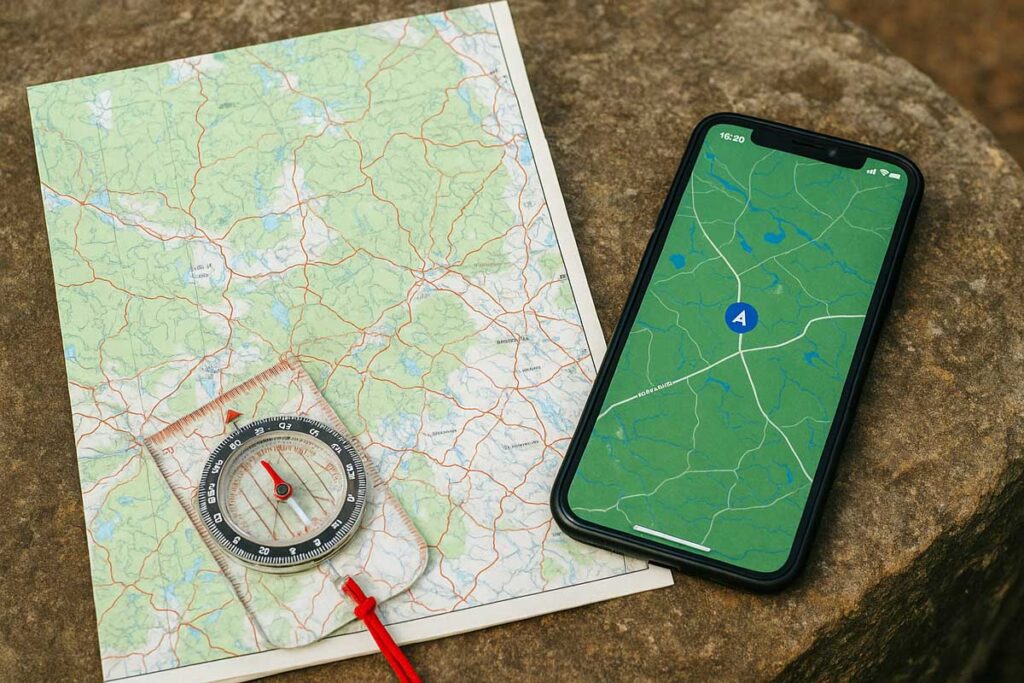
By combining both traditional and modern navigation tools, you safeguard yourself against unforeseen circumstances.
6. Safety and First-Aid Supplies
Safety should always be a priority on any trip. A well-stocked first-aid kit can handle minor injuries and ailments.
- Basic first-aid kit: Include items like bandages, antiseptic wipes, pain relievers, and tweezers.
- Multi-tool or knife: Useful for a variety of outdoor tasks.
- Firestarter kit: Waterproof matches, lighters, or a magnesium fire starter make it easier to ignite a fire safely.
- Insect repellent and sunscreen: These protect against bugs and UV rays.
- Emergency blanket: Lightweight and compact, it’s handy in case of unexpected weather changes.
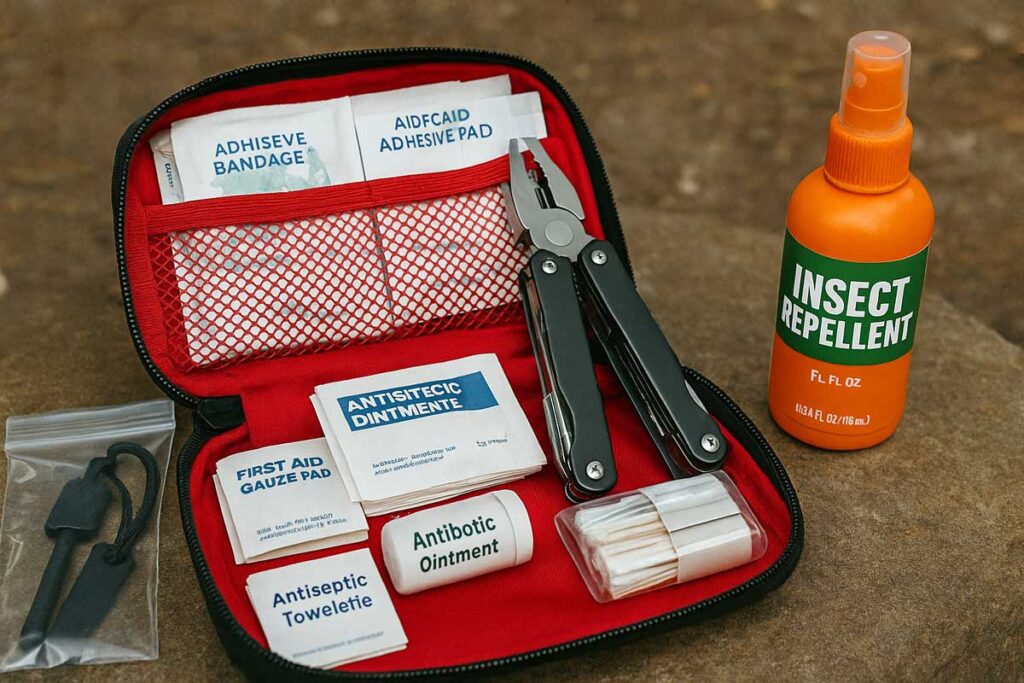
I always double-check my first-aid kit before leaving to ensure all supplies are in good condition.
7. Personal Essentials and Extras
While the above categories cover the primary needs, don’t forget your personal items.
- Toiletries: Pack biodegradable soap, toothbrush, toothpaste, and hand sanitizer.
- Towel: A quick-drying towel can be very useful.
- Personal identification and permits: Always bring your ID, necessary permits for the campsite, and some cash.
- Entertainment: A book or deck of cards can help you unwind in the evenings.
- Camera: Capture the beauty of nature on your trip. Ensure you protect your camera from the elements.
- Notebook and pen: Jot down your thoughts, observations, or even keep a diary of your adventure.
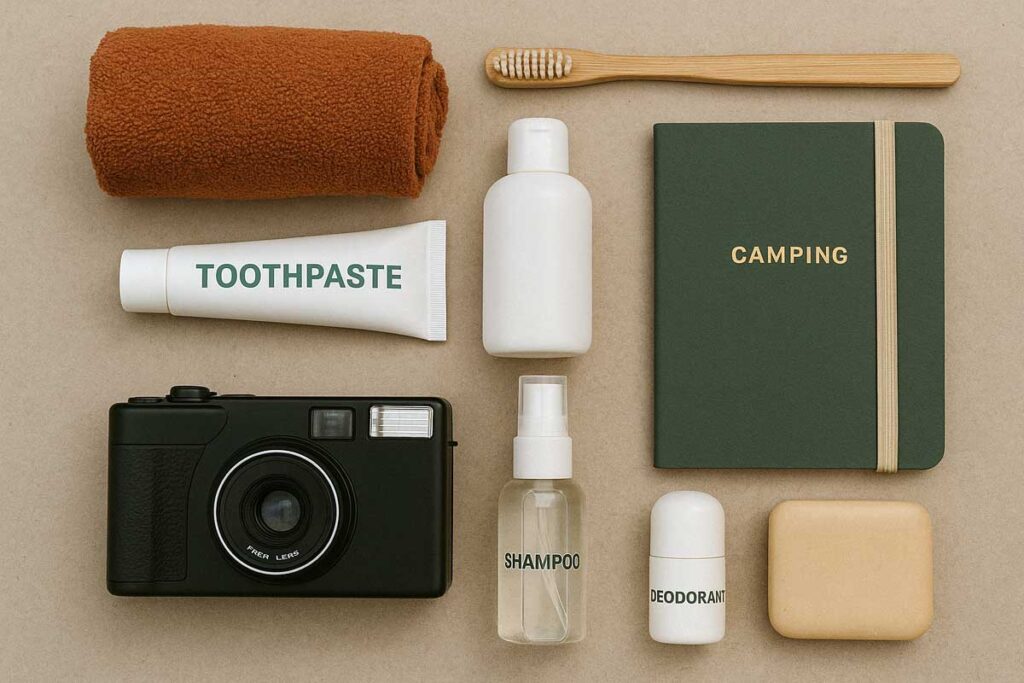
8. Packing and Organizing Your Gear
Packing Strategies
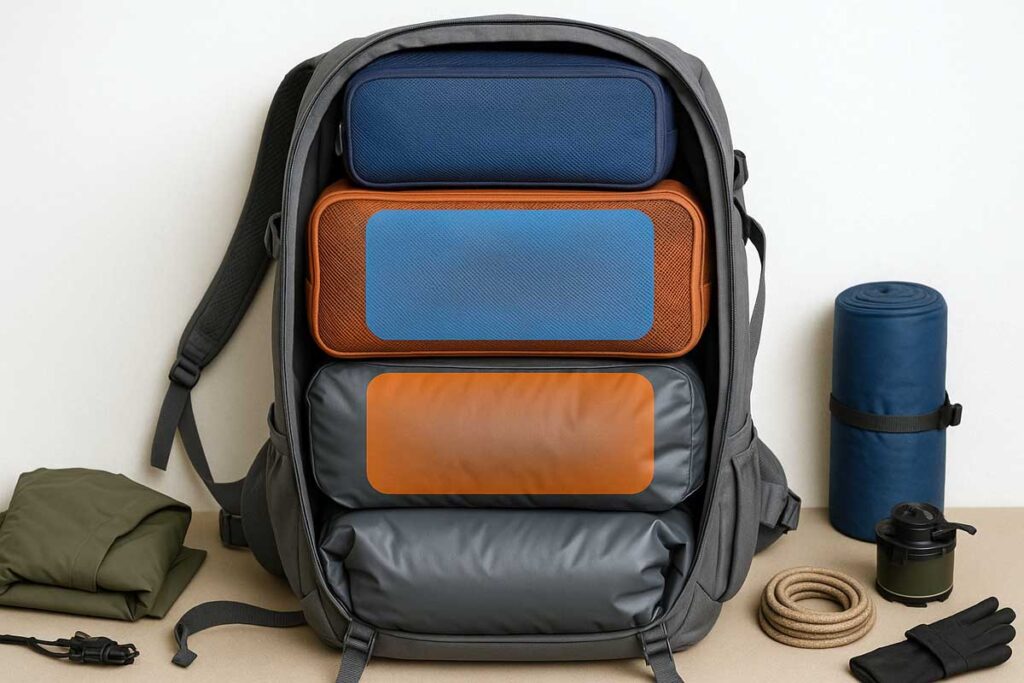
You know about packing is really important for a camping trip. Packing efficiently is just as important as knowing what to pack. Here are some strategies:
- Use packing cubes or bags: They help organize your gear by category, making it easier to locate items.
- Prioritize accessibility: Keep items you will need frequently near the top of your pack.
- Weight distribution: Pack heavier items towards the middle of your backpack to maintain balance.
- Waterproof organization: Use dry sacks or zip-lock bags for items that may get wet.
Step-by-Step Packing Process
- Start with a checklist: Review your list and check off items as you pack them.
- Pack your tent and sleeping gear first: These are the largest items and require careful placement.
- Organize clothing in separate bags: Group items by layers or days to simplify outfit choices.
- Arrange cooking items and food: Place them in a watertight container near the center of your pack.
- Include safety items and navigation tools last: Keep these accessible for emergencies.
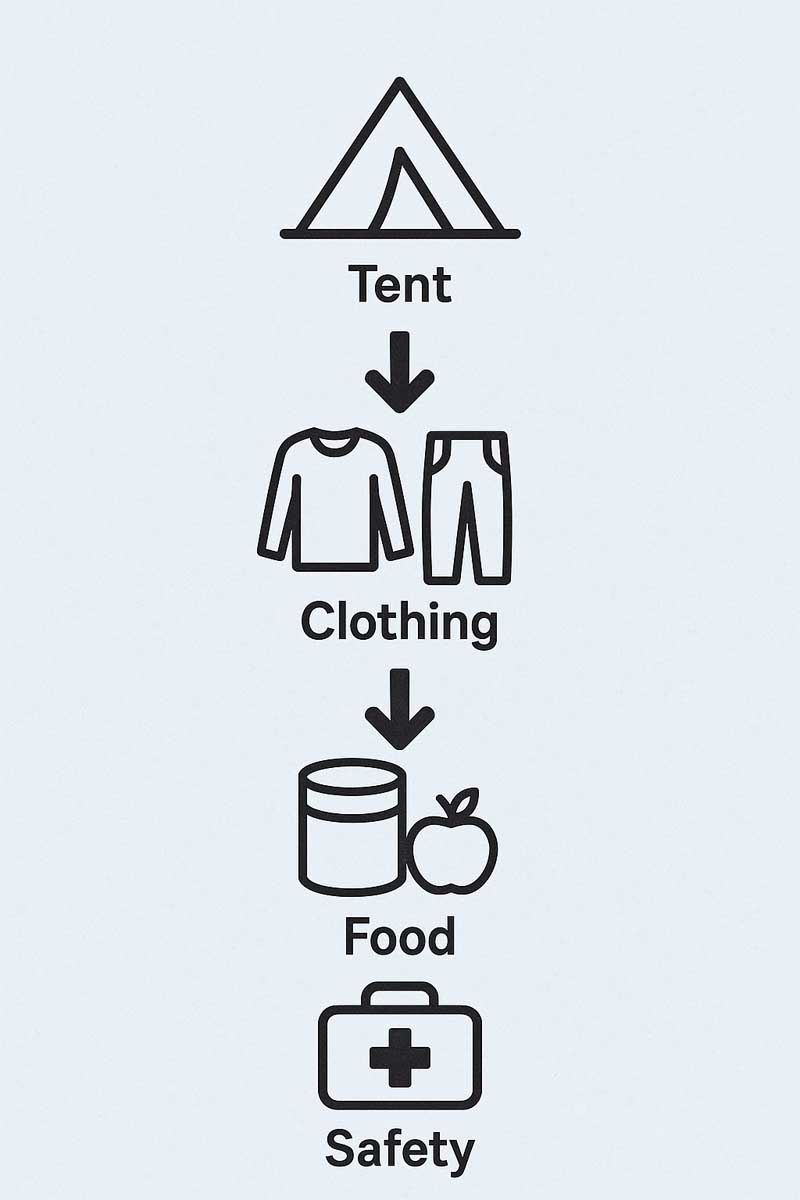
This method of organization not only saves space but also minimizes the hassle when setting up camp.
9. Final Tips and Reminders
Double-Check Before You Leave
Take a few minutes to go over your checklist one last time. It’s far better to realize you’ve forgotten something critical before you hit the road than when you’re setting up camp in the middle of nowhere.
Leave No Trace
As responsible campers, we must follow leave-no-trace principles. Respect nature by cleaning up after ourselves and minimizing our environmental impact. For further details on sustainable camping practices, you might want to explore resources available on Wikipedia’s camping page.
Adaptability is Key
Every trip will present its unique challenges. Always have a backup plan and be prepared to adapt to changing circumstances, whether it’s unexpected weather or changes in terrain.
Enjoy the Experience
At the end of the day, camping is about connecting with nature and enjoying the great outdoors. A well-prepared trip leads to less stress and more fun. Enjoy the peacefulness of nature and the camaraderie that comes with sharing this adventure with friends or family.
10. Quick Reference Checklist
Below is a quick reference checklist you can print out or save on your phone to ensure you’re well-prepared:

1. Shelter & Sleeping Gear:
- Tent, tarp/footprint, repair kit
- Sleeping bag, sleeping pad, pillow
2. Clothing:
- Moisture-wicking base layers
- Insulating and outer layers
- Durable footwear, extra socks, gloves, and accessories
3. Cooking & Food:
- Portable stove, fuel, cooking utensils
- Reusable dishes and cutlery, food supplies, snacks
- Water, water filter or purification tablets
4. Navigation & Communication:
- Map, compass, handheld GPS, smartphone, portable charger
5. Safety & First-Aid:
- First-aid kit, multi-tool/knife, flashlight/headlamp
- Firestarter kit, insect repellent, sunscreen
- Emergency blanket
6. Personal Essentials:
- Toiletries, towel, personal ID/permits
- Entertainment items (book/cards), camera
- Notebook and pen
7. Packing Aids:
- Packing cubes, waterproof bags
- Proper weight distribution strategy
Learn more: What to Bring for Summer Camp
FAQs about What to Bring on a Weekend Camping Trip
Final Thoughts
When packing for a weekend camping trip, having the necessary gear in an organized, thought-out manner saves time and reduces stress. In my experience as a camper, preparation leads to a more enjoyable outing and fewer unexpected setbacks. Each trip reinforces the value of planning your shelter, clothing, food, water, and safety gear meticulously.
In short, for a successful weekend camping trip, bring a reliable tent, a warm sleeping bag with a pad, versatile clothing layers, cooking gear (stove, utensils, food, and water), a first-aid kit, navigation and emergency supplies, and personal hygiene items. These essentials ensure safety, comfort, and convenience throughout your outdoor adventure.
Remember that adjustments might be necessary depending on the season, location, and the specific activities you plan on doing. Regularly review and update your checklist to incorporate new tips and improvements based on your ongoing experiences.
I hope this guide serves as a practical resource as you prepare for your next adventure in the outdoors. Stay safe, be prepared, and enjoy the natural surroundings with confidence.

